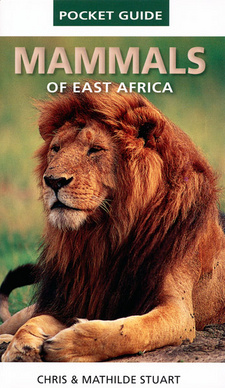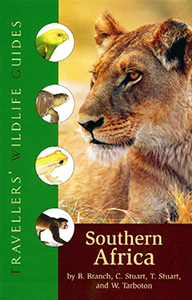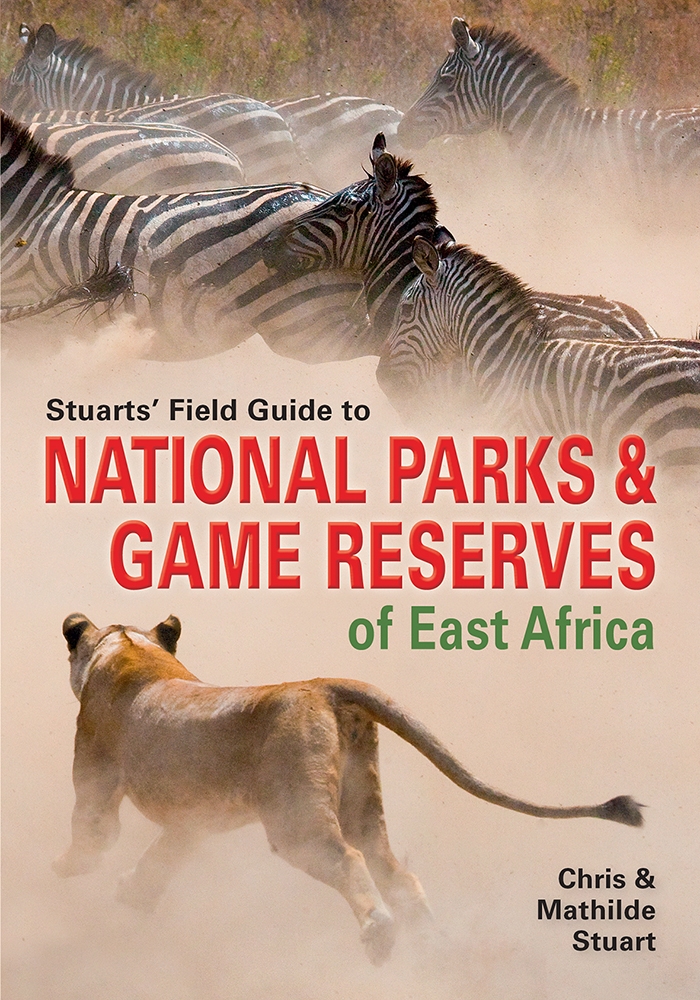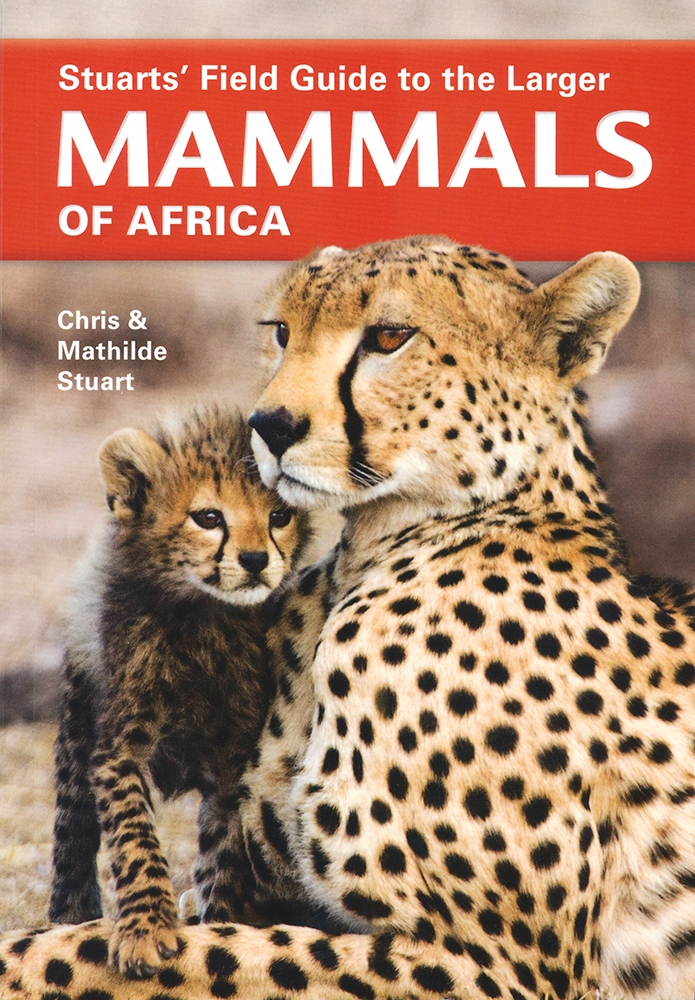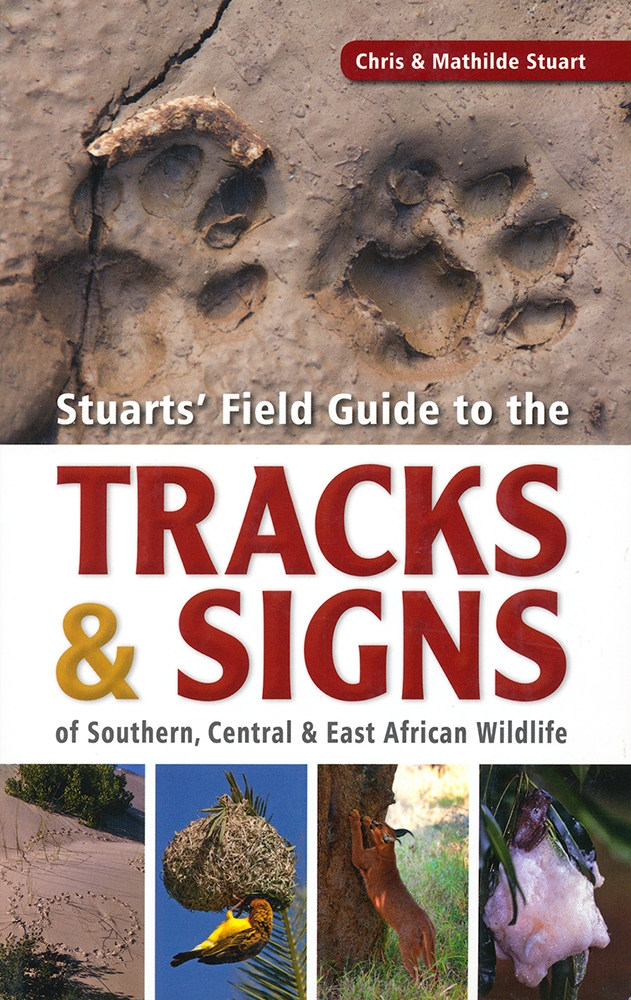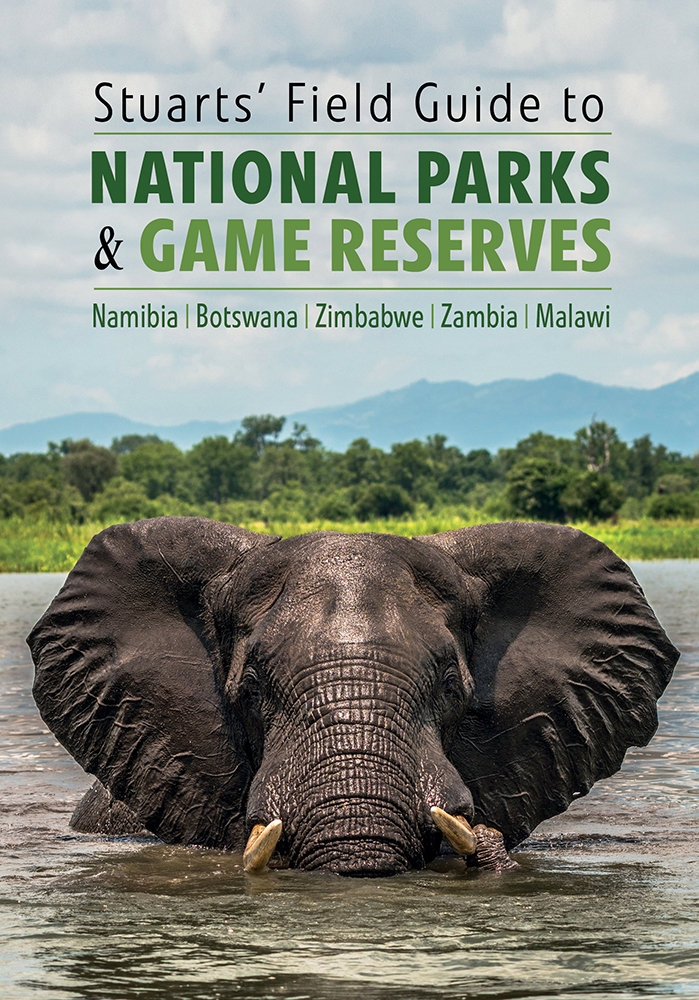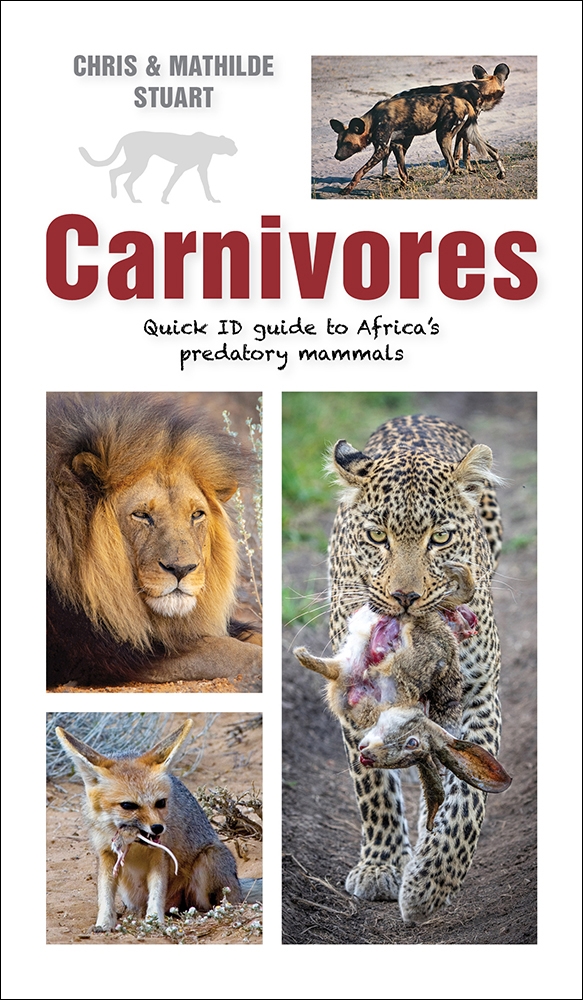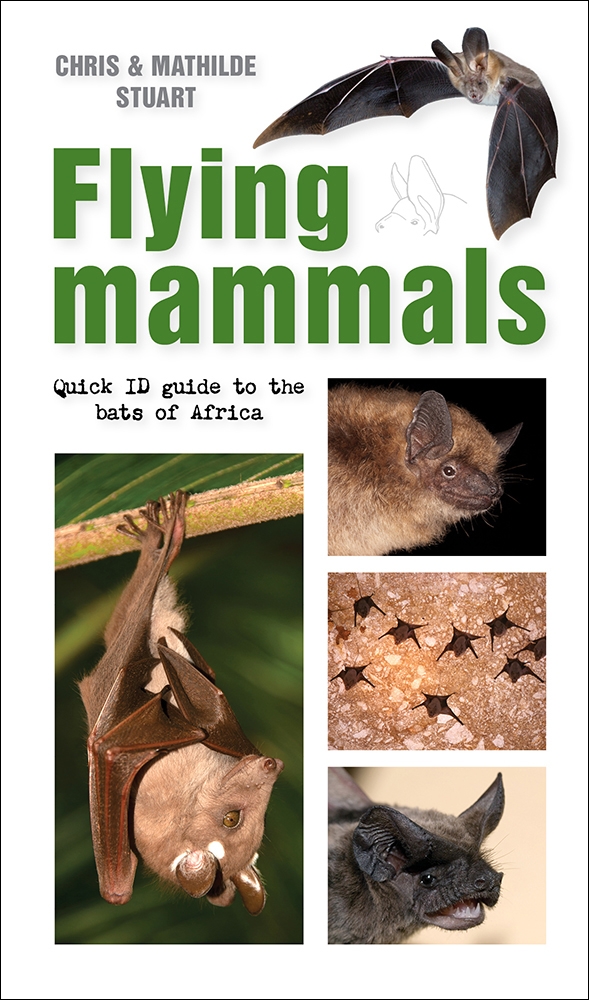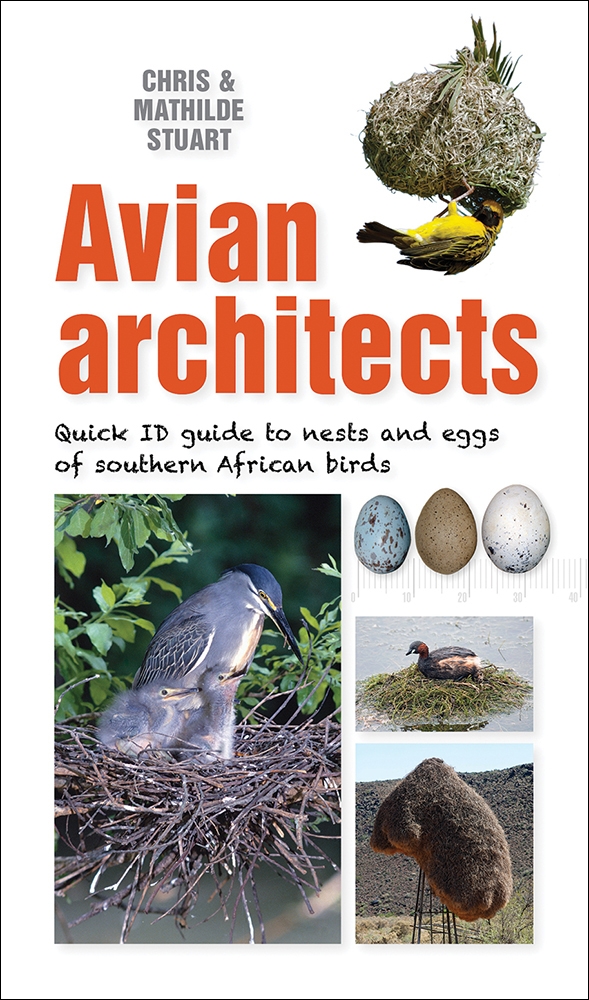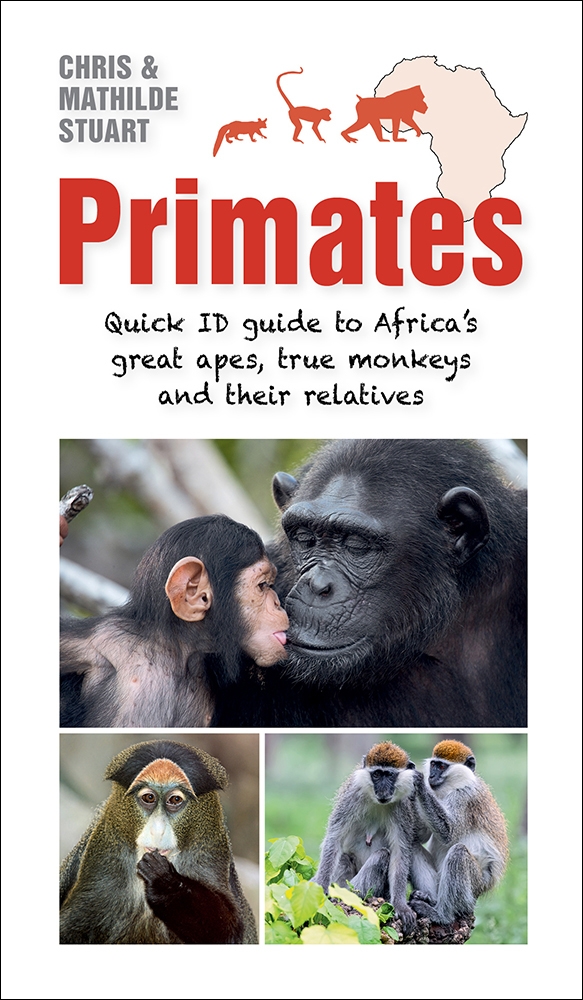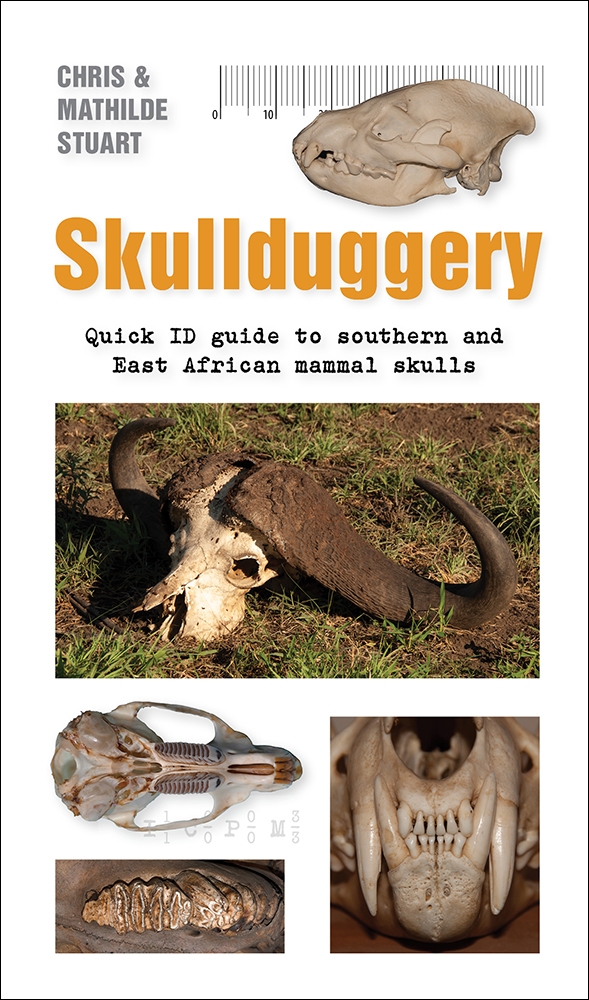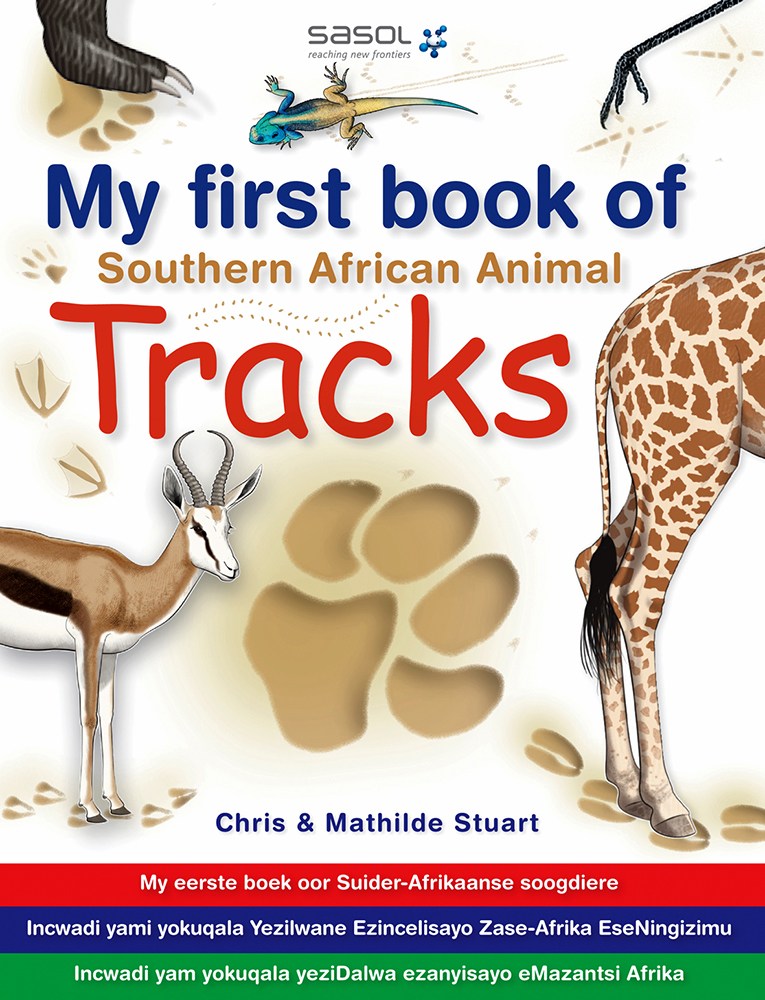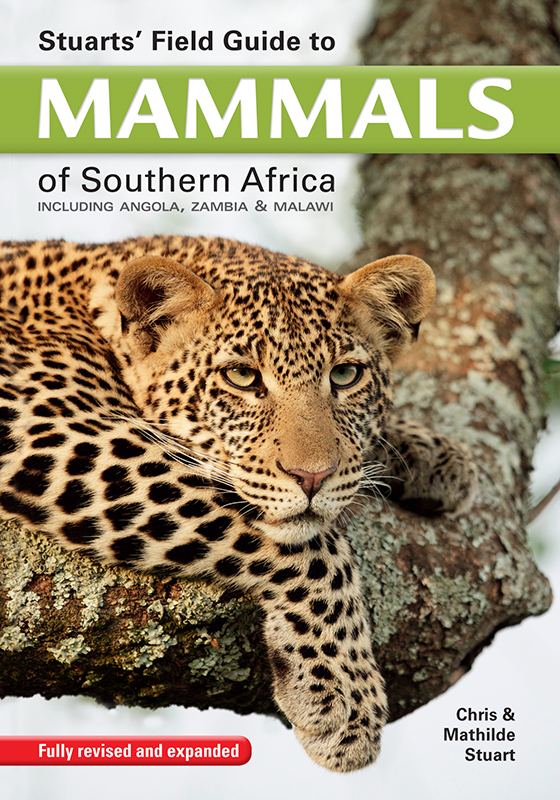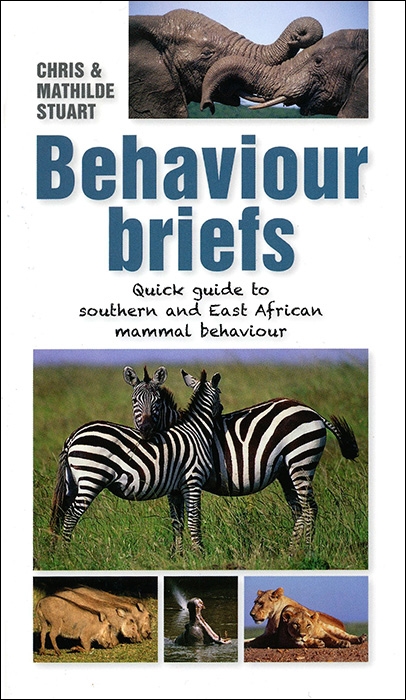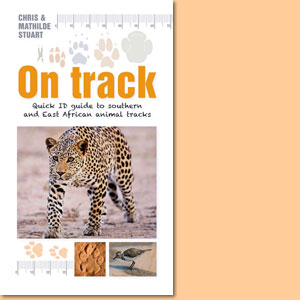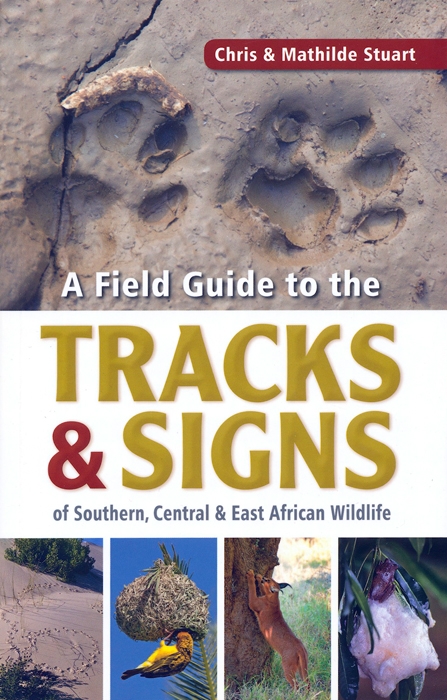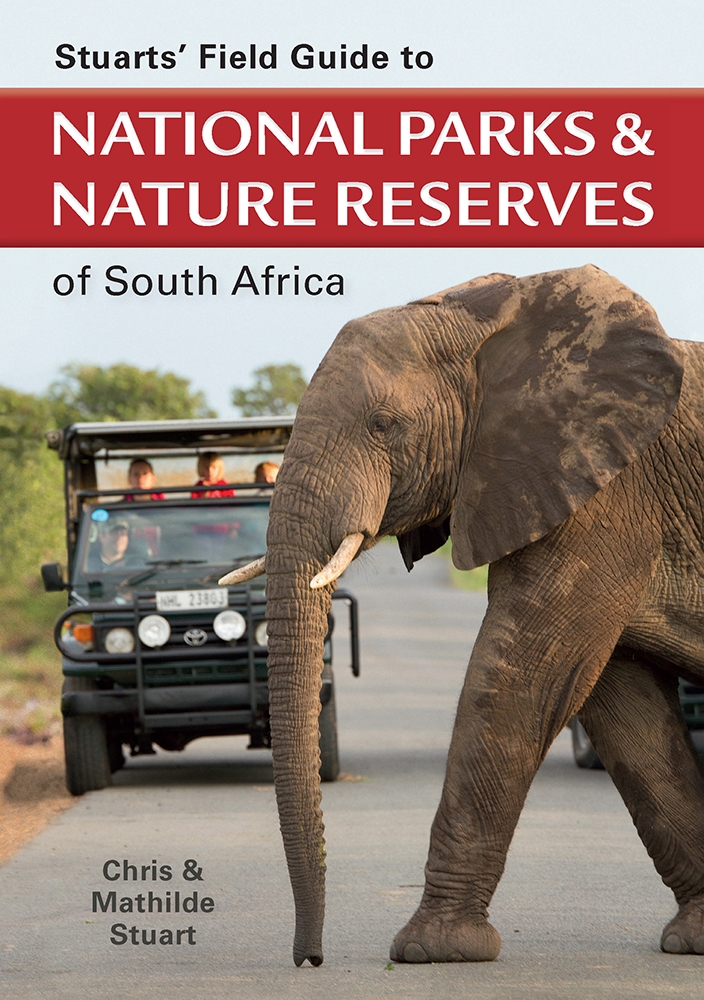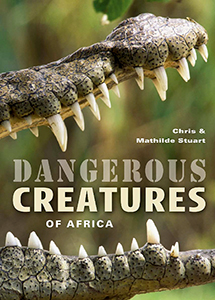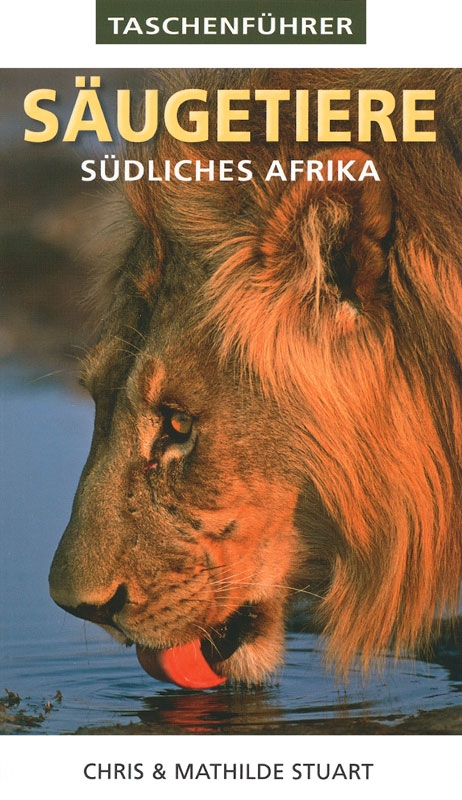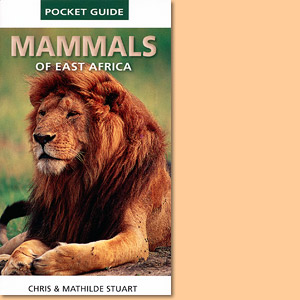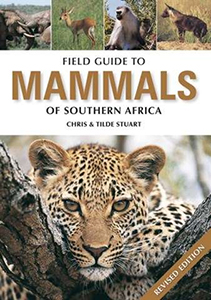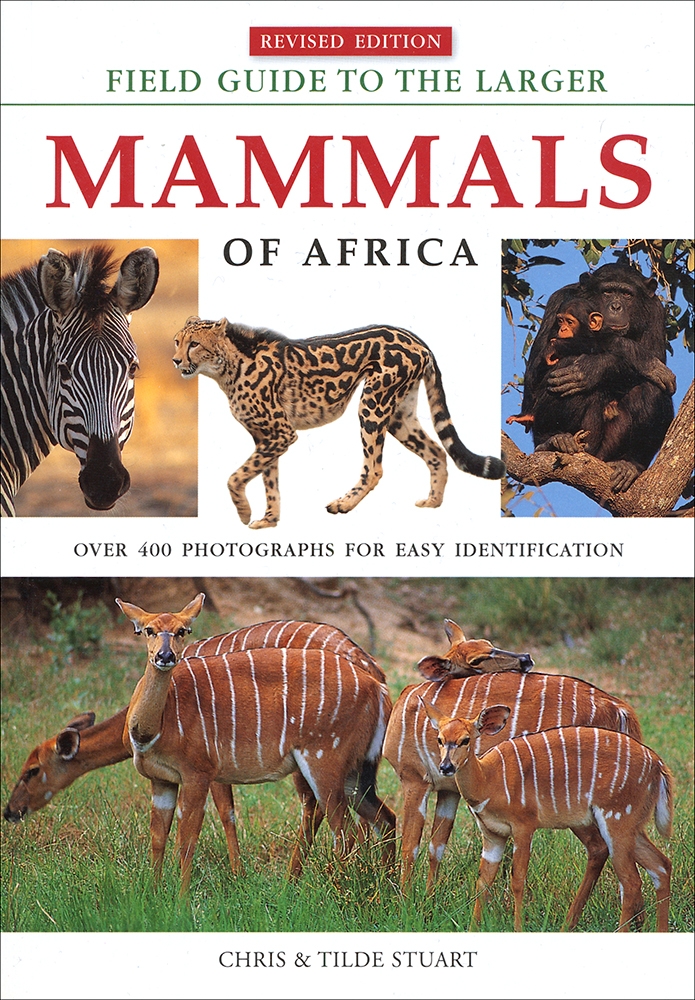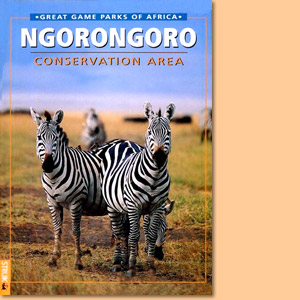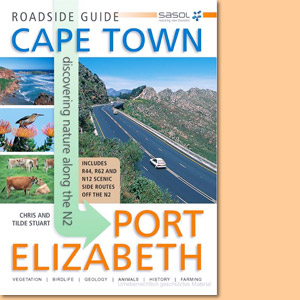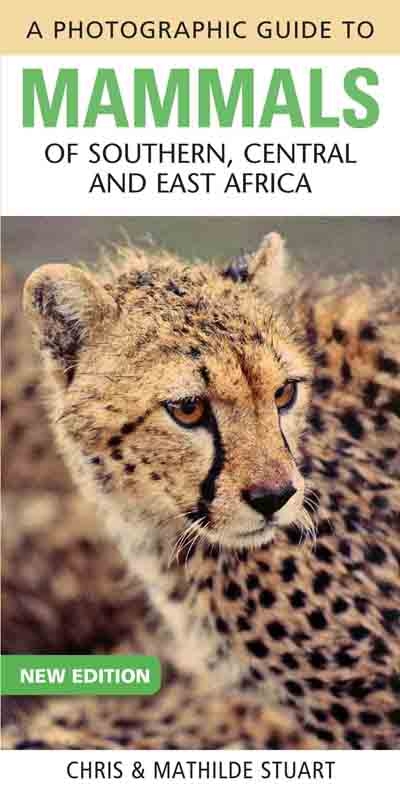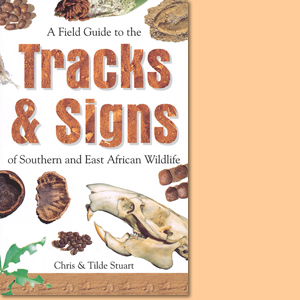Mammals of East Africa Pocket Guide, by Chris Stuart and Tilde Stuart
Mammals Of East Africa Pocket Guide covers all of the common, some of the less common mammal species and is written by Chris Stuart and Tilde Stuart.
The name 'East Africa' conjures up vistas of grassland scattered with umbrella thorn trees, and home to vast herds of hoofed mammals. Yet the region is comprised not only of this, but of many different habitats, from high mountains to rain forests, great lakes and rivers to coastline, all providing suitable living space for more than 360 species of terrestrial mammal. The mammal species range in size from elephants that may weigh several thousand kilograms, to bats, shrews and mice that tip the scales at little more than a few grams. Politically East Africa consists of Kenya, Uganda, Tanzania, Burundi and Rwanda. However, wildlife in the last-mentioned two countries has largely been eradicated. To the east lies the Indian Ocean and to the west are the four great lakes - Edward, Victoria, Tanganyika and Malawi. Here are the legendary Ruwenzoris, or Mountains of the Moon, and the mighty peaks of Kilimanjaro, Kenya and Elgon. A chain of soda lakes runs like an uneven necklace down the floor of the Great Rift Valley. Where the mighty Nile River rises there are active, dormant and long-dead volcanoes. It is a region not only of great topographical diversity but also of numerous vegetation types. The vegetation map has been greatly simplified but does indicate seven of the most important vegetation types that you will encounter during your East African travels.
Outside the conservation areas much of the landscape has been greatly modified by the actions of growing human populations. Large tracts of natural bushland have been cleared for agriculture, both subsistence and commercial, and trees have been turned into charcoal. Human settlements have increased and existing ones have expanded. Poaching has resulted in decreasing mammal diversity and populations. Nevertheless, those interested in wildlife, and specifically in mammals, have much to look forward to in the region. We have included most of the larger and more conspicuous mammal species. In addition, a few of the more unusual species such as the pangolin, aardvark and porcupine have been included, as well as representatives from the different families and genera of bats, shrews, elephant shrews (sengis) and smaller rodents.
Example from Mammals of East Africa Pocket Guide, by Chris Stuart and Tilde Stuart:
Atilax paludinosus
Swahili: Nguchiro cha maji
German: Wassermanguste
French: Mangouste des marais
Identification pointers: A large, stoutly built mongoose with a uniformly dark brown and rather shaggy coat. Some individuals may be almost black, or reddish-brown, but from a distance all look blackish and, at close quarters, grizzled. Hair on the muzzle and feet is short, but long and erectile on the tail.
Similar: Could only be confused with Alexander's cusimanse (Crossarchus alexandri), but overlap may occur only in far-western Uganda; sometimes mistaken for otter, but latter is larger, sleeker and variably marked on throat.
Habitat: Most well-watered habitats, rivers, marshes, swamps, lake fringes and coastline. Will penetrate arid areas along watercourses as long as permanent pools present. Sometimes found several kilometres from water.
Behaviour: Nocturnal, crepuscular and terrestrial. Readily wade and swim. Probably territorial. Sightings are mainly of solitary animals, although pairs and females with young sometimes seen. When foraging they follow well-used pathways, and droppings are deposited at regularly used latrine sites - often near water. When hunting they rely on sight and hearing. Their long toes probe under and among rocks for prey.
Food: Mainly crabs and amphibians, but also wide range of invertebrates, small rodents, birds; occasionally wild fruits.
Reproduction: Births and young recorded in the region May to August, but are based on few records and are possibly aseasonal.
Drop: 1-3 cubs, about 120 g, in dense vegetation cover (reed beds), rock crevices, or the burrows of other species.
Longevity: Not known.
Calls: High-pitched bark alarm call is usually the only one heard.
Occurence: Relatively common, but seldom seen.
Weight: 2.5-5.5 kg
Shoulder height: 22 cm
Total length: 80 cm-1 m
Tail length: 30-40 cm
Front: 41 mm
Back: 36 mm
This is an extract from the guide: Mammals of East Africa Pocket Guide, by Chris Stuart and Tilde Stuart.
Book title: Mammals Of East Africa
Series: Pocket Guide
Authors: Chris Stuart; Tilde Stuart
Publisher: Randomhouse Struik
Cape Town, South Africa 2009
ISBN 9781770077065
Softcover, 11x18 cm, 160 pages, throughout colour photos
Stuart, Chris und Stuart, Tilde im Namibiana-Buchangebot
Traveller's Wildlife Guide Southern Africa
Traveller's Wildlife Guide Southern Africa introduces 500 of Southern Africa’s most common amphibians, reptiles, birds, and mammals.
Stuart's Field Guide to National Parks and Game Reserves of East Africa
Stuart's Field Guide to National Parks and Game Reserves of East Africa provides an overview of some 58 protected areas across East Africa.
Stuarts’ Field Guide to the Larger Mammals of Africa
Stuarts’ Field Guide to the Larger Mammals of Africa concentrates on the more visible and easily distinguished larger species.
Stuarts' Field Guide to the Tracks & Signs of Southern, Central and East African Wildlife
Stuarts' Field Guide to the Tracks & Signs of Southern, Central and East African Wildlife, this is the 5th revised edition.
Stuarts' Field Guide to National Parks and Nature Reserves of Namibia, Botswana, Zimbabwe and Zambia
Stuarts' Field Guide to National Parks and Nature Reserves of Namibia, Botswana, Zimbabwe and Zambia.
Carnivores: Quick ID guide to Africa's predatory mammals
Carnivores: Quick ID guide is a compact and quick ID identification guide to Africa's predatory mammals.
Flying Mammals Quick ID guide to the bats of Africa
Flying Mammals Quick ID is a compact and quick ID identification guide to the bats of Africa.
Avian Architects: Quick ID guide to nests and eggs of southern African birds
Avian Architects: Quick ID is a compact and quick ID identification guide to nests and eggs of southern African birds.
Primates: Quick ID guide to Africa's great apes, true monkeys and their relatives
Primates Quick ID is a compact and quick ID identification guide to Africa's great apes, true monkeys and their relatives.
Skullduggery: Quick ID guide to southern and East African mammal skulls
Skullduggery is a compact and quick ID identification guide to skulls of southern and East African mammals.
My first book of Southern African animal tracks
My first book of Southern African Animal Tracks introduces 55 different types of animals and their footprints.
Stuarts' Field Guide to Mammals of Southern Africa
Stuart's Field Guide to Mammals of Southern Africa covers near to 400 mammal species including Angola, Zambia and Malawi since the 5th edition of 2015.
Behaviour briefs: Quick guide to southern and East African animal behaviour
Why do they do that and what next? Behaviour briefs is a quick guide to southern and East African animal behaviour.
On Track: Quick ID Guide to Southern and East African Animal Tracks
On Track is a quick identification guide to tracks of Southern and East African most commonly found mammals, reptiles, rodents, birds and insects.
A Field Guide to the Tracks & Signs of Southern, Central and East African Wildlife
Latest edition of A Field Guide to the Tracks & Signs of Southern, Central and East African Wildlife.
Stuarts' Field Guide to National Parks and Nature Reserves of South Africa
Stuarts' Field Guide to National Parks and Nature Reserves of South Africa offers a comprehensive overview of 43 parks, reserves and wilderness areas.
Dangerous creatures of Africa
The focus of Dangerous creatures of Africa is on understanding, identifying, avoiding and surviving these potential hazards of the African wilds.
Taschenführer: Säugetiere, Südliches Afrika
Der Taschenführer Säugetiere: Südliches Afrika, legt seinen Schwerpunkt auf die größeren, öfter gesehenen Tierarten, schließt allerdings auch einige ungewöhnliche Arten ein.
Mammals Of East Africa Pocket Guide
Mammals Of East Africa Pocket Guide covers all of the common and some of the less common mammal species.
Mammals of Southern Africa Pocket Guide
Authoritative and colourfully illustrated, Mammals of Southern Africa Pocket Guide offers concise information.
Field Guide to Mammals of Southern Africa
A total of 337 species are covered in this fully revised comprehensive field guide to mammals of Southern Africa.
Field Guide to the Larger Mammals of Africa
Field Guide to the Larger Mammals of Africa provides over 400 colour photos, with concise, pertinent information highlighting the diagnostic features of each species.
Ngorongoro Conservation Area
From the series 'Great Game Parks of Africa' this is a portrait of the Ngorongoro Conservation Area.
Sasol Roadside Guide. Cape Town-Port Elizabeth: Discovering Nature Along the N2
The Sasol Roadside Guide Cape Town-Port Elizabeth: Discovering Nature Along the N2 interprets the surrounding countryside - plants, birds, mammals, reptiles, agriculture, geology.
A Photographic Guide to Mammals of Southern, Central and East Africa
A Photographic Guide to Mammals of Southern, Central and East Africa introduces 152 mammal species of each family group.
Field Guide to Tracks and Signs of Southern and East African Wildlife
Related to Southern African and East African Wildlife, this great field guide is about their tracks and signs, like droppings, feeding signs, scent marks and others.

